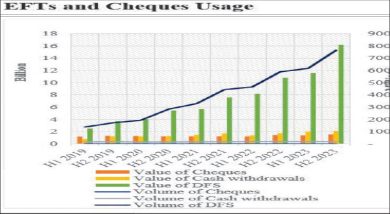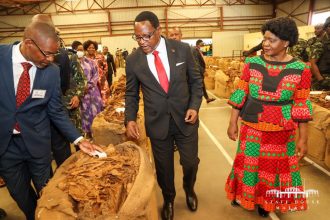No forex relief
Reserve Bank of Malawi (RBM) says the outstanding foreign exchange demand could take time to be cleared despite the commencement of tobacco sales.
In its March 2021 Market Intelligence Report, the central bank says this could also be a source of upside risks to inflation, which has since increased to 9.4 percent in March 2021 from 7.6 percent in December 2020.
The inflation upsurge was attributed to an increase in non-food inflation which, in turn, reflected largely the upward adjustments in fuel pump prices effected on December 17 2020 and March 9 2021, and the continued depreciation of the kwacha.
Reads the report in part: “Annually, the kwacha lost 6.5 percent against the US dollar between March 2020 and March 2021.

“However, the pressures being experienced by the kwacha are fairly more subdued than those of currencies of most of the selected sub-Saharan Africa countries.”
RBM figures show that the South African rand and Namibian dollar appreciated by 17.2 percent each, while the Mozambican Metical, Botswana pula and the Ugandan shilling appreciated by 6.5 percent, 5.4 percent and 3.2 percent, respectively.
On the other hand, the Zambian kwacha, the Angolan kwanza, Kenyan shilling, Rwandan franc, the Nigerian naira and the Tanzanian shilling registered year-on-year depreciations of 24.1 percent, 18.6 percent, 5.2 percent, 4.5 percent, 2.3 percent, and 0.9 percent in March 2021, respectively.
“The Malawi kwacha was also among the regional currencies which continued to be under pressure during the review period, as supply of foreign exchange remained insufficient to satisfy the prevailing demand.
“Specifically, the local unit lost 2.69 percent in value against the US dollar between December 2020 and March 2021, compared to a loss of 2.09 percent between September and December 2020.”
Meanwhile, within first two weeks of sales, Malawi has realised $15.1 million (about K11.8 billion) from the sale of 8.9 million kilogrammes (kg) of all types of tobacco.
According to AHL Group, this represents a 69.6 percent increase when compared to the $8.9 million (about K6.9 billion) the country realised during the same period last year after selling 5.6 million kg of the crop.
The figures further show that prices being offered on the market this year are a bit higher than last year as the average price was seen at $1.68 during the period from $1.55.
In an interview Tuesday, Tobacco Association of Malawi (Tama) chief executive officer Nixon Lita said there is some hope in terms of prices as demand is higher than estimated production
Hr said: “It’s too early to say with certainty. Contracts sales have started on a good note, with average prices surpassing 2020 figures and growers are excited.
“But the problem is with auction sales, where rejection rates have been very high. There is hope, however, that situation may improve as more buyers are expected to take part on the auction market soon.”
Tobacco Commission chief executive officer Joseph Chidanti Malunga earlier said most of the buyers who participated in the auction market had not yet started buying tobacco.
Tobacco remains Malawi’s major export crop.
According to Tobacco Commission production estimates, Malawi will likely produce 122 million metric tonnes of tobacco against an estimated buyer demand of 132 million metric tonnes.
Estimated tobacco production is 15 percent below last year and 25 percent below the five-year average.
Last year, the country sold 112.89 million kilogrammes of tobacco, realising $173.5 million (about K135 billion) from the green gold. The earnings were 27 percent below the $237 million (about K185 billion) realised during the 2019 season.
RBM figures show that gross official reserves dwindled to $574.3 million (2.7 months of import cover) at the end of 2020, from $819.5 million (3.9 months of import cover) recorded at the end of 2019.





